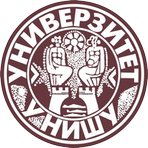Title
Istraživanje ponašanja adhezionih spojeva metalnih konstrukcija pod dejstvom statičkog i cikličnog opterećenja
Creator
Stojković, Nenad V. 1984-
Copyright date
2017
Object Links
Select license
Autorstvo-Nekomercijalno-Bez prerade 3.0 Srbija (CC BY-NC-ND 3.0)
License description
Dozvoljavate samo preuzimanje i distribuciju dela, ako/dok se pravilno naznačava ime autora, bez ikakvih promena dela i bez prava komercijalnog korišćenja dela. Ova licenca je najstroža CC licenca. Osnovni opis Licence: http://creativecommons.org/licenses/by-nc-nd/3.0/rs/deed.sr_LATN. Sadržaj ugovora u celini: http://creativecommons.org/licenses/by-nc-nd/3.0/rs/legalcode.sr-Latn
Language
Serbian
Cobiss-ID
Theses Type
Doktorska disertacija
description
Datum odbrane: 15.12.2017.
Other responsibilities
mentor
Topličić Ćurčić, Gordana
član komisije
Folić, Radomir
član komisije
Pasternak, Hartmut
član komisije
Stojić, Dragoslav
član komisije
Živković, Srđan
Academic Expertise
Tehničko-tehnološke nauke
University
Univerzitet u Nišu
Faculty
Građevinsko-arhitektonski fakultet
Group
Katedra za materijale i konstrukcije
Alternative title
Investigation of the behavior of adhesive joints in metallic structures subjected to static and cyclic loading
Publisher
[N. V. Stojković]
Format
XI, 172 lista
description
Bibliografija: listovi 161-171
description
Civil engineering materials and structures
Abstract (en)
Adhesive joints offer many advantages compared to the traditional
joining techniques in metallic structures. However, the lack of unified
design standards and procedures limit their wider use in civil engineering
industry. For the purpose of standardization, extensive experimental
work has to be done on investigating their behavior under the service
conditions. Besides the influence of the joint geometry, the
manufacturing process and the temperature and humidity effects, type of
the loading has the greatest influence on the behavior of adhesive joints.
Main goal of this dissertation was to investigate behavior of adhesive
joints in metallic structures under static and cyclic loading, using modern
experimental and numerical methods. In order to achieve this the
selection of proper adherent surface preparation procedure was
necessary.
Experimental investigation of the behavior of adhesive joints subjected
to static and cyclic loading was conducted on two types of adhesive
joints: galvanized steel façade joint and double lap shear joint. Based on
the results of the experimental investigation, as well as the results from
the literature, new models and methods were developed for modeling of
the behavior and predicting the fatigue life of adhesive joints subjected to
static and cyclic loading.
Authors Key words
adhezioni spojevi, metalne konstrukcije, statičko opterećenje,
ciklično opterećenje, zamor
Authors Key words
Adhesive joints, metallic structures, static loading, cyclic loading,
fatigue
Classification
624.014:[624.078:624.042.2/.8(043.3)
Subject
T220
Type
Elektronska teza
Abstract (en)
Adhesive joints offer many advantages compared to the traditional
joining techniques in metallic structures. However, the lack of unified
design standards and procedures limit their wider use in civil engineering
industry. For the purpose of standardization, extensive experimental
work has to be done on investigating their behavior under the service
conditions. Besides the influence of the joint geometry, the
manufacturing process and the temperature and humidity effects, type of
the loading has the greatest influence on the behavior of adhesive joints.
Main goal of this dissertation was to investigate behavior of adhesive
joints in metallic structures under static and cyclic loading, using modern
experimental and numerical methods. In order to achieve this the
selection of proper adherent surface preparation procedure was
necessary.
Experimental investigation of the behavior of adhesive joints subjected
to static and cyclic loading was conducted on two types of adhesive
joints: galvanized steel façade joint and double lap shear joint. Based on
the results of the experimental investigation, as well as the results from
the literature, new models and methods were developed for modeling of
the behavior and predicting the fatigue life of adhesive joints subjected to
static and cyclic loading.
“Data exchange” service offers individual users metadata transfer in several different formats. Citation formats are offered for transfers in texts as for the transfer into internet pages. Citation formats include permanent links that guarantee access to cited sources. For use are commonly structured metadata schemes : Dublin Core xml and ETUB-MS xml, local adaptation of international ETD-MS scheme intended for use in academic documents.


